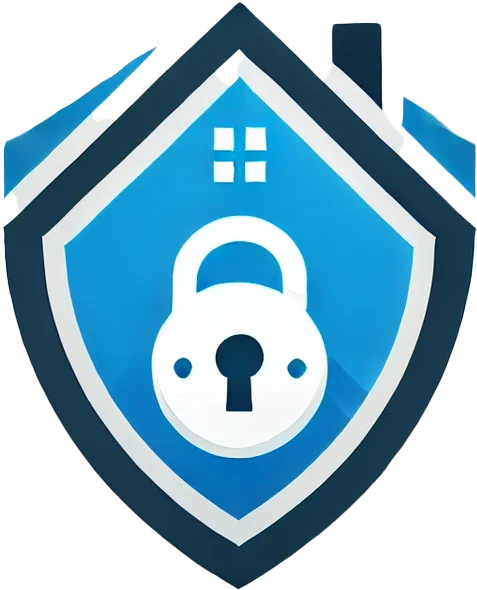It started with a child’s laugh.
At 2:47 AM, I jolted awake to the sound of giggling coming through my daughter’s baby monitor. But my three-year-old wasn’t laughing – she was sound asleep. That’s when I heard it: an unfamiliar male voice cooing, “Wake up, little one.”
My blood ran cold. Someone had hacked into our baby monitor.
That night changed everything I thought I knew about home cybersecurity. As a tech-savvy millennial working in digital marketing, I had always prided myself on being “security conscious.” I used different passwords (okay, mostly different), had a decent antivirus program, and kept my software updated… sometimes. Like most Americans, I thought I was doing enough. I couldn’t have been more wrong.
The Nightmare Begins
After disconnecting the baby monitor and spending the rest of the night in my daughter’s room, I discovered this wasn’t an isolated incident. Within hours, my smart home began to unravel. Our thermostat started acting erratically, cranking up to 85 degrees despite the automation rules I’d set. Then came the email from my bank about “suspicious activities.” The final straw? Finding out someone had been watching us through our smart doorbell camera for weeks.
The financial damage was bad enough – $3,427 stolen through various connected accounts. But the emotional toll? That was immeasurable. My husband and I found ourselves jumping at every notification, unplugging devices left and right, and arguing about whether we should just go back to “dumb” technology. Our smart home, once a source of pride and convenience, had become a source of anxiety and fear.
The Wake-Up Call
“What you experienced is increasingly common,” said Sarah Chen, a cybersecurity expert I consulted in my panic. “In 2023, smart home attacks increased by 48%, with the average breach costing homeowners over $10,000 in damages.” She paused before adding, “And that’s just the financial cost.”
I learned that my setup had more holes than Swiss cheese. Here were my biggest misconceptions:
- “Different passwords” didn’t mean slightly changing one character
- Two-factor authentication was optional (it’s not)
- Factory settings on smart devices were secure enough
- Regular updates weren’t that important
- Network segregation was only for businesses
The Road to Recovery
Rebuilding our digital fortress wasn’t cheap or easy, but it was necessary. Here’s what we implemented:
1. Network Segmentation ($299 for a proper router)
I created three separate networks:
- Primary network for computers and phones
- IoT network for smart home devices
- Guest network for visitors
2. Password Management ($60/year)
Invested in a password manager and generated unique 20+ character passwords for every account. As Dr. Michael Foster from CyberSafe Institute notes, “A password manager isn’t an expense – it’s an insurance policy.”
3. Security Hardware ($450)
- Network firewall
- VPN service
- Updated modem with built-in security features
4. Professional Security Audit ($500)
Had an expert review our setup and identify vulnerabilities we’d missed.
5. Ongoing Monitoring ($10/month)
Subscribed to a service that alerts us to unusual network activity.
The New Normal
Today, our smart home looks different. We still embrace technology, but with proper boundaries. Every new device goes through a security checklist:
- Does it need internet access?
- What data does it collect?
- Can it be updated?
- Does the manufacturer have a good security track record?
- Where will it live on our network?
The most surprising outcome? We feel more in control. As my husband says, “We’re not paranoid anymore because we know we’re protected.”
Lessons You Can Apply Today
- Start with the Basics (Free)
- Enable two-factor authentication everywhere
- Update all devices monthly
- Review connected devices quarterly
- Invest in Security ($100-500)
- Get a password manager
- Install a network firewall
- Use a VPN
- Consider professional monitoring
- Create Boundaries
- Separate networks for different purposes
- Limited access for guests
- Regular security audits
- Clear family protocols for new devices
- Change default passwords immediately
Looking Back, Looking Forward
That terrifying laugh through the baby monitor was a gift in disguise. It forced me to confront our vulnerability and take action. According to recent statistics, 87% of homeowners don’t address their cybersecurity until after an incident. Don’t be part of that statistic.
Today, my daughter is four, and her room has a “dumb” audio-only monitor. Our smart home is smarter and safer than ever. When she’s older, I’ll tell her about the night that changed everything, and hopefully, she’ll grow up understanding that in our connected world, security isn’t optional – it’s essential.
Remember: Every smart device is a potential door into your home. Make sure you have the right locks.
Take Action Now
- Audit your current setup. List every connected device.
- Change all passwords today. Yes, all of them.
- Research and invest in basic security tools.
- Create a family security protocol.
- Schedule regular security check-ups.
Don’t wait for a 2 AM wake-up call. Start securing your smart home today.
Sarah Matthews is a digital marketing professional and mom who learned about cybersecurity the hard way. She now advocates for smart home safety and conducts workshops for families transitioning to connected homes.*names changed for privacy*
